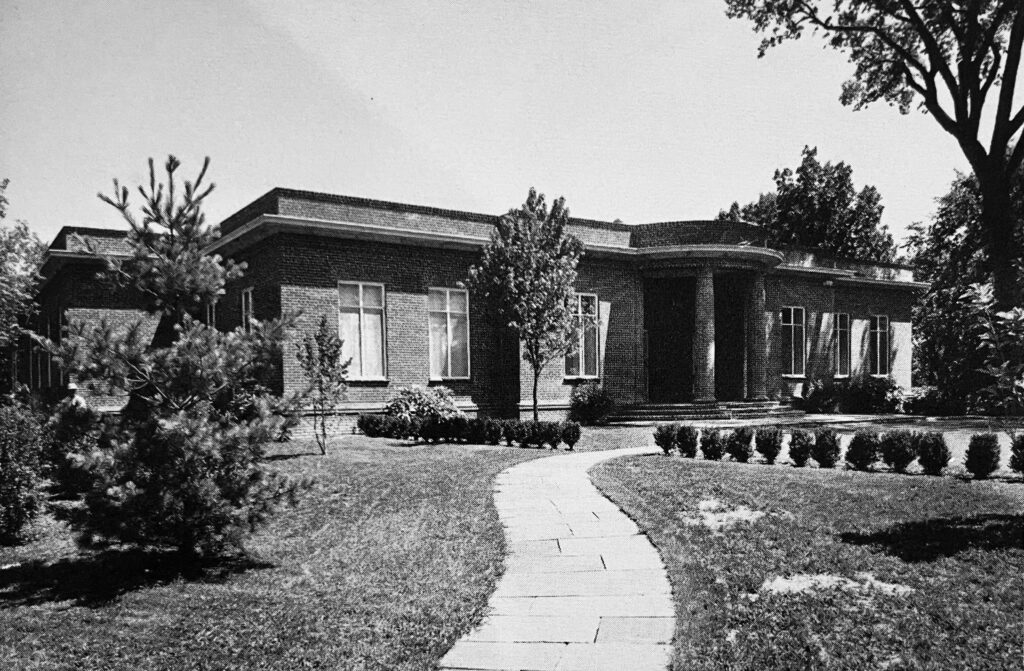
The Center for Hellenic Studies[1] was established in January 1961 and modeled after The Institute for Advanced Study in Princeton, a fellowships institution with access to the collections of Princeton University without being part of the university, and Dumbarton Oaks, a similar center for Byzantine, Pre-Columbian, and garden and landscape studies, and like the CHS, an institution forming part of Harvard University yet with a great deal of independence. Instrumental to its founding were Paul Mellon, Huntington Cairns, and Marie Beal. Mellon provided the funds, Cairns the passion and ideology to rescue the world from “organized vulgarity” through “Hellenism”, and Beal the both “secluded and accessible” property.
The CHS was initially called the “Residence,” referring to the resident fellows’ program, the core function of the CHS, allowing early career scholars to focus on research and writing during their stay. Before the Center was established, several academics and others disagreed on whether or not the Center should be subsumed under a university such as Harvard or be completely independent; some argued that it should not be yet another “ivory tower” institution but a place to educate secondary school teachers which they considered the best way to combat what they saw as an assault on the humanities at the time. There were also those who felt that Hellenic studies was too narrow in scope, and others who opposed its location in DC, which was not considered an intellectual or cultural center at the time.
Today, of course, with the Smithsonian, the Library of Congress, the National Gallery of Art, the Folger Shakespeare Library and several top academic institutions such as Georgetown, Catholic, American, and Howard universities, and Harvard’s Dumbarton Oaks and Center for Hellenic Studies, the huge number of ethnic restaurants and religious buildings of every kind, DC has become a cultural hotbed. And to view Hellenic studies as narrow is debatable. Apart from being a fascinating, incredibly complex, with many questions yet to be answered, and multi-layered area of investigation in itself and with many disciplinary approaches to pursue, ancient Greece has held an immeasurable influence on western history, government, political institutions and movements, education, philosophy, science, medicine, theater, opera, music, art, architecture, prose, poetry, on western languages such as English, even on sports and popular culture.
When the CHS opened its doors, it had neither a library nor housing for the fellows who had to find their own living quarters in Washington. Page Cross, an architect based in New York was hired to design buildings at the Center. His design included a central building with a library, seminar rooms, offices, and studies, as well as a dining room and kitchen. The director would have a separate house and there would be a unit of five family houses and a separate building with single rooms, initially accommodating 8 fellows.
The architectural focus of the Center was the building that housed the library. Initially, there were just a handful of books. Michael C. J. Putnam, professor at Brown and acting director the first year, wrote to Blackwell’s in Oxford asking if they knew of any private libraries for sale, stating, “what we really most need is a first-rate nucleus of the basic texts, commentaries and reference works. I don’t envision another Bodleian or a Widener. Still, we want a good working library, cutting as broad a swathe through the various disciplines as possible.” In the autumn of 1961 Werner Jaeger, professor at Harvard, suddenly died. His widow allowed the CHS to acquire his large library, including several antiquarian books. By the end of 1962, Jaeger’s book collection was available to the fellows in Washington. Soon other private libraries were added such as those of Harvard professors Arthur Stanley Pease and Arthur Darby Nock. In 1971, Director Bernard M. W. Knox, former professor at Yale, wrote, “at the threshold of its tenth year of existence the Center can take pride in the building of a library which in spite of its late beginning is adequate in most of the many branches of discipline it represents and more than adequate in some.”
By 1986, the library’s holdings numbered ca. 43,000 volumes; today, it numbers ca. 76,000, and the number of fellows has risen to ca. 20. The library also accommodates ca. 20-30 researchers or readers. The areas of collecting have expanded to include selective coverage in art, archaeology, numismatics, paleography, and Rome added to the comprehensive collecting of ancient Greek philology (including epigraphy, music, religion, and papyrology), ancient Greek history (including politics and law), and ancient Greek philosophy (including science and medicine) spanning the Greek world from ca. 800 BCE to ca. 430 CE. Major titles on modern Greece are now also acquired.
[1] The historical information in this passage and much more can be found in Lindquist, Eric N. The Origins of the Center for Hellenic Studies. Princeton University Press, 1990.
